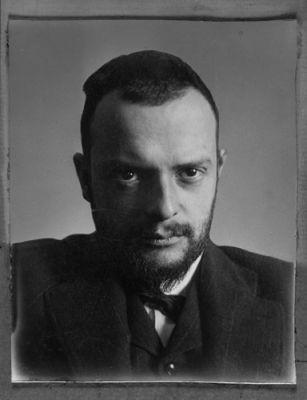Paul Klee (Paul Klee)

Artist. His father Hans was a music teacher, and young Paul originally wanted to follow in his footsteps and to become a musician too. However, when he was a teenager he decided he wanted to pursue a career in the visual arts instead of the musical arts. He received his training at the Academy of Fine Arts in Munich, where the famous artists Franz von Stuck and Heinrich Knirr were also students. After graduation Klee travelled to Italy and Switzerland before coming back to Munich. During his years in Munich he became friends with a number of the artists in a group of expressionist artists known as Der Blaue Reiter (The Blue Rider), which had formed in 1911. Prominent members of this group included August Macke, Franz Marc, Louis Moilliet, and Wassily Kadinsky. In Munich he also met Lily Stumpf, a Bavarian pianist whom he married and had a son, Felix, with. Throughout his artistic career, Klee worked with many different types of media, among them watercolors, ink, and oil paints. Because of how multi-faceted his work was, many people in different schools of art, such as expressionism, fauvism, surrealism, and cubism, have tried to claim him for their own. Among his most famous paintings are ‘Embrace’ (1939), ‘Southern (Tunisian) Gardens’ (1919), ‘Angelus Novus’ (1920), and ‘Ad Parnassum’ (1932). During World War I he was involved in painting camouflage on planes being used by the Imperial German Army. After the war he was a teacher first at the Bauhaus art school and then, starting in 1931, at the Düsseldorf Academy. However, his teaching job in Düsseldorf proved to be short-lived, as he was denounced for his “degenerate art” when the Nazis came to power. Klee and his family went back to his native Switzerland in 1935 to escape Nazi persecution. In Switzerland, he came down with symptoms of what was posthumously identified as scleroderma, the disease that ultimately led to his death. Six days after his death in one of a series of sanitariums he’d been treated in, he was granted Swiss citizenship, something he had sought for much of his life. Though he had been born in Switzerland, legally he had been assigned German citizenship, since his father had also been a German citizen at the time of Paul’s birth. Klee’s ashes were kept in an urn by his widow Lily Stumpf until her death, at which time the urn was buried together with Stumpf. (bio by: Carrie-Anne)
Born
- December, 18, 1879
- Switzerland
Died
- June, 06, 1940
- Switzerland
Cemetery
- Schlosshalden Friedhof
- Bern
- Switzerland

